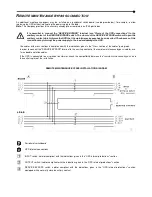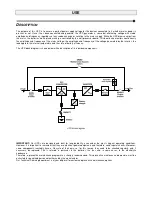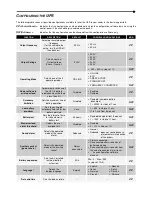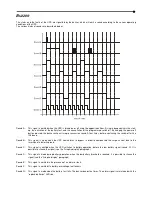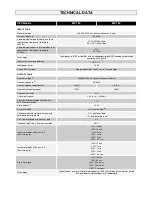
R
EDUNDANT AUXILIARY POWER SUPPLY FOR AUTOMATIC BYPASS
This UPS is provided with a redundant auxiliary power supply which allows the UPS to run on an automatic bypass, even in the
event of faults on the main auxiliary power supply. If a fault occurs in the UPS, shutting off the main auxiliary power supply, the
load will be powered anyway by the automatic bypass. The multiprocessor board and the control panel are not powered;
therefore the LEDs and the display are off.
A
UXILIARY
“
POWER SHARE
”
AND
“
POWER OUT
”
SOCKETS
(
OPTIONALS
)
The "Power share" socket
is a programmable output socket which enables, under certain operating circumstances, the
automatic disconnection of the load applied to it. The events that determine this automatic disconnection of the “power share”
socket can be selected by the user through the configuration software (see
"Configuration software”
and
“Configuring the UPS"
paragraphs). For example, the disconnection could be selected after a given time of battery operation, or when the end-of-
battery-charging pre-alarm threshold is reached, or when an overload occurs.
The "Power out" socket
is connected directly to the UPS output and it is useful to power accessories such as modems, for
example
.
Safety notes:
when the UPS is switched on, if the output isolator (SWOUT) is opened, the sockets will remain
powered.
If the manual bypass isolator (SWMB) is inserted, the output isolator (SWOUT) is opened and once the UPS is
turned off, the sockets are no longer powered.
P
OWER WALK
-
IN
This UPS is equipped in series with a Power Walk-In mode, which can be activated and configured through the configuration
software. When the mode is active, and mains power is restored (after an autonomy period) the UPS resumes absorbing
progressively from it, in order to prevent stress (due to the peak) on any generator set installed upstream. The transient time
can be set from 1 to 125 seconds. The default value is 10 seconds. During the transient, the necessary power is drawn partially
from the batteries and partially from the mains, maintaining a sinusoidal absorption. Once the transient is over, the battery
charger is turned on again.
P
OWER REDUCTION FOR
200/208V
PHASE
-
NEUTRAL LOADS
In case the output voltage is set to 200V or 208V PHASE-NEUTRAL (see the “Configuring the UPS” paragraph), the maximum
power output of the UPS is reduced compared to its nominal value, as shown in the diagram below:





